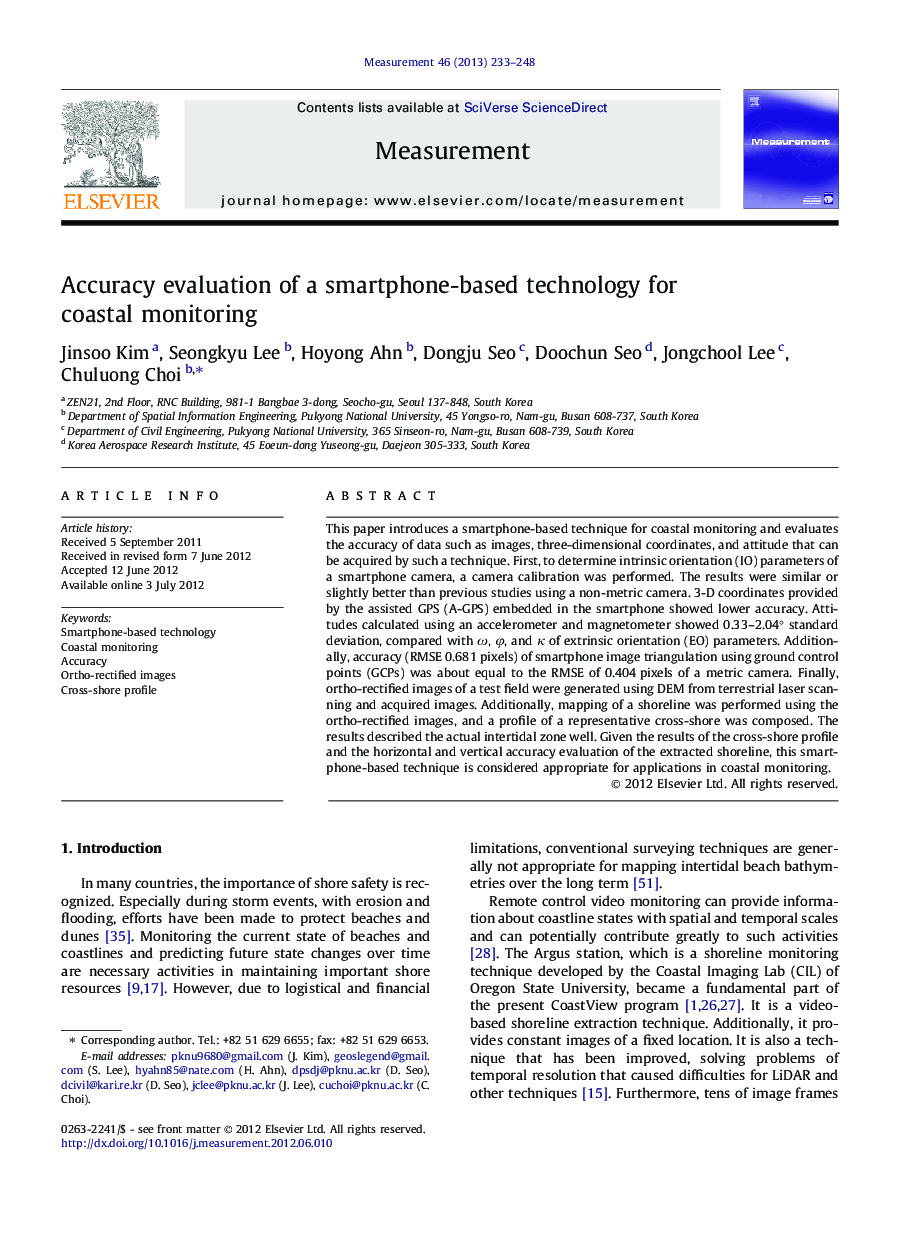| Article ID | Journal | Published Year | Pages | File Type |
|---|---|---|---|---|
| 727529 | Measurement | 2013 | 16 Pages |
This paper introduces a smartphone-based technique for coastal monitoring and evaluates the accuracy of data such as images, three-dimensional coordinates, and attitude that can be acquired by such a technique. First, to determine intrinsic orientation (IO) parameters of a smartphone camera, a camera calibration was performed. The results were similar or slightly better than previous studies using a non-metric camera. 3-D coordinates provided by the assisted GPS (A-GPS) embedded in the smartphone showed lower accuracy. Attitudes calculated using an accelerometer and magnetometer showed 0.33–2.04° standard deviation, compared with ω, φ, and κ of extrinsic orientation (EO) parameters. Additionally, accuracy (RMSE 0.681 pixels) of smartphone image triangulation using ground control points (GCPs) was about equal to the RMSE of 0.404 pixels of a metric camera. Finally, ortho-rectified images of a test field were generated using DEM from terrestrial laser scanning and acquired images. Additionally, mapping of a shoreline was performed using the ortho-rectified images, and a profile of a representative cross-shore was composed. The results described the actual intertidal zone well. Given the results of the cross-shore profile and the horizontal and vertical accuracy evaluation of the extracted shoreline, this smartphone-based technique is considered appropriate for applications in coastal monitoring.
► Smartphone can be operated anytime and anywhere under any 3G network environment. ► It can also be used to establish a monitoring system at a low cost. ► The accuracy improved by 80% when camera calibration data were considered. ► Smartphone camera accuracy was equal to metric camera accuracy. ► Shorelines were extracted for various time points using the final ortho-rectified images.
